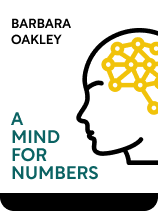

This article is an excerpt from the Shortform book guide to "A Mind for Numbers" by Barbara Oakley. Shortform has the world's best summaries and analyses of books you should be reading.
Like this article? Sign up for a free trial here .
How well do you remember what you learn? What are some techniques that can help?
Barbara Oakley, in her book A Mind for Numbers, discusses how to improve your memory for studying. She shares ways to make information more memorable and techniques for effective recall. These strategies, combined with insights from Moonwalking with Einstein author Joshua Foer, can help you remember what you learn.
Keep reading for ideas on how to improve your memory for studying.
Remember What You Learn
Oakley explains that, the more connections an information chunk has, the more memorable it is. Furthermore, the more often you access it, the stronger the connections become. More connections and stronger connections both make a chunk more accessible. Thus, there are two factors that determine how well a concept will stick in your memory: how memorable it is, and how often you recall it. To learn how to improve your memory for studying, explore these strategies for making information memorable and recalling information.
Make Information More Memorable
According to Oakley, something will generally be more memorable if it possesses one or more of the following factors:
- You write it out long-hand (Writing Factor).
- You say it out loud (Speech Factor).
- It has more connections, literal or metaphorical, to other concepts (Association Factor).
- It involves moving your body (Movement Factor).
- It makes you laugh (Humor Factor).
- It tells a story or connects concepts through cause and effect (Story Factor).
- It invokes multiple senses (Sensory Factor).
- It connects visual and spatial data to form visuospatial map chunks (Spatial Factor).
| Additional Memorability Factors From Joshua Foer In Moonwalking with Einstein, Joshua Foer also identifies factors that make information more memorable. He corroborates Oakley on the sensory, humor, and spatial factors, emphasizing the importance of the spatial factor. Additionally, he includes four factors that Oakley doesn’t consider: The information stands out as novel or unique (Novelty Factor). You can relate the information to your own experiences (Personal Factor). It’s concrete rather than abstract (Concreteness Factor). It displays patterns or structure, like rhyme or repetition (Structure Factor). |
Techniques for Making Information More Memorable
But what if you need to remember something that, by itself, isn’t all that memorable? As Oakley explains, you could come up with an acronym or a sentence composed of words that symbolize the ideas you need to remember. Oakley notes that if you say it out loud or set it to music and sing it, you can also take advantage of the speech and song factors.
Another technique that Oakley discusses consists of developing a “visual metaphor,” or mental image that represents what you need to remember. She also discusses the “memory palace,” which is a powerful extension of visual metaphors to take advantage of the spatial factor and potentially the story factor. As Oakley explains, you first think of a place that you know well, such as your home or college campus. Then you imagine yourself moving through the place, interacting with objects. Each object is a visual metaphor for something you need to remember.
For example, suppose you need to memorize the hierarchy of taxonomy for biology class: Kingdom>Phylum>Class>Order>Family>Genus>Species. In your mind’s eye, you are walking across campus when you suddenly bump into the King of England, who happens to be visiting your college that day (Kingdom). Next, you stop at the cafeteria, where you order a Philly steak-and-cheese sandwich (phylum). Then you go to class (class).
After class, you head back to your dorm room, but you have to take a detour because a drill sergeant is parading his troops on the campus lawn and shouting a lot of orders (order). When you arrive at your dorm room, you discover your family has come to visit (family). After your family leaves, you notice that your laundry basket is full of jeans, so you head over to the campus laundry room to wash your jeans (genus). However, in the laundry room, you discover that your jeans are covered with tiny yellow specks (species) that won’t wash off.
| Foer’s Techniques for Making Information More Memorable Unlike Oakley, Foer doesn’t discuss singing or speaking out loud as a way of making information more memorable. Perhaps this is because when you’re taking an exam and need to remember something, you’re generally not allowed to break out in song or get up and dance around the classroom. However, Foer does discuss the use of visual metaphors and the memory palace. He explains that the term “memory palace” is a modern name, while earlier sources refer to it as the “method of loci.” In these early descriptions, each imaginary location where you place a visual metaphor was called a locus (and loci is the plural of locus). In Foer’s description, the memory palace is the master technique to which all other methods are subservient. You populate your memory palace with visual metaphors, and in some cases, you may use symbolic sentences to generate visual metaphors for abstract concepts or develop more memorable images. For example, if you are building a memory palace for your biology class and you want to consolidate the hierarchy of taxonomy into a single image, you could symbolize it with the sentence, “King Phillip cleaned orange fungus off Jenny’s spectacles,” where King = Kingdom, Phillip = Phylum, cleaned = class, orange = order, Jenny = genus, spectacles = species. You then place the mental image of this scene at one location in your memory palace. |
Review Information to Keep It Accessible
Now, let’s discuss strategies for recalling information. Oakley cautions that even a memorable fact may soon become unretrievable if it is not reviewed. She presents some strategies you can use to make your review sessions more effective:
- Test yourself with intentional recall. If you just finished a reading assignment, Oakley recommends closing the book and trying to recall the essence of what you just read. She asserts that this is the most effective way to embed the content in your memory.
(Shortform note: William James documented that active repetition (or intentional recall) is more effective for learning than methods of passive repetition, such as rereading the material, over a hundred years ago. Numerous studies since then have confirmed this effect.)
- Oakley suggests practicing “spaced repetition,” where you repeatedly revisit material at designated intervals. She recommends revisiting any new information within one day, so you don’t forget it completely.
(Shortform note: Psychological studies have determined that students who practice intermediate spacing between study sessions tend to perform better than those who do all their studying at once, and also better than those who break it up into smaller sessions and study too frequently. Other experts assert that the optimal time for a recall session is when the information in your mind gets fuzzy—it’s no longer fresh, but it’s not gone yet either.)

———End of Preview———
Like what you just read? Read the rest of the world's best book summary and analysis of Barbara Oakley's "A Mind for Numbers" at Shortform .
Here's what you'll find in our full A Mind for Numbers summary :
- How to make math and science intuitive
- Strategies for remembering complex concepts more easily
- How to build good study habits and avoid procrastination






